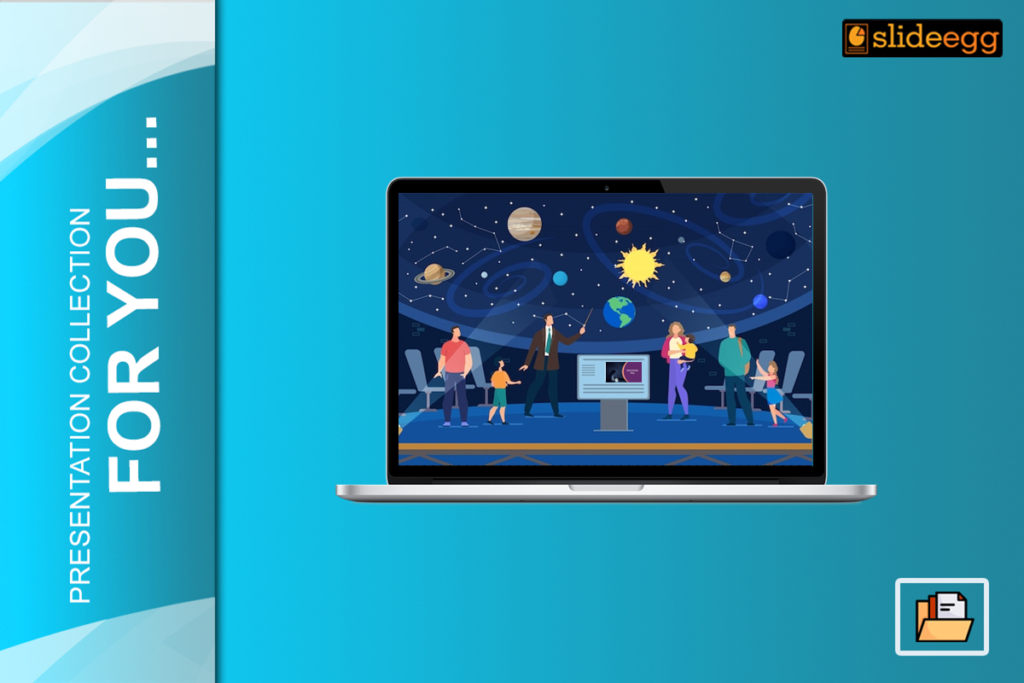Presenting a public discussion about the galaxy may be both interesting and terrifying. The galaxy is huge and full of unique minute details that can capture an audience; however, the challenge is to deliver this information in a clear, engaging, and structured manner. In this blog, we’ll look at how to give a good presentation about the galaxy so that your audience stays engaged using a Space PowerPoint template.
Understanding Your Audience
Before you begin creating content, you need to figure out who your target audience is. Are they students, teachers, amateur astronomers, or the general public? Customizing your presentation to their level of knowledge and interest is essential for keeping them engaged. For example, a presentation for students may contain more interactive elements and simplified explanations, whereas a beginner astronomer’s discussion may go further into technical details and new findings.
Structure Your Presentation
A well-structured presentation is essential for clarity and audience engagement. Here is a suggested outline:
Introduction to the Galaxy
- A brief explanation of what a galaxy is.
- Mention the Milky Way, our home galaxy.
Galaxy components
- Stars
- Nebulae
- Star Clusters
- Black Holes
Types of Galaxies
- Spiral
- Elliptical
- Irregular
Interactive Elements Using Space Template
Using illustrations is essential when describing difficult and large topics such as galaxies. High-quality graphics, animations, and videos can help make your presentation more interesting and understandable.
Here are a few tips:
- Images: Use images from trustworthy sources, such as NASA or the European Space Agency. High-resolution photographs of galaxies, star clusters, and nebulae can have a tremendous influence.
- Animations and Videos: Short videos explaining subjects such as galaxy creation or black hole activity can help to break up the repetition and provide a more complete knowledge.
- Interactive Elements: Think about using interactive tools like 3D models of galaxies or simulations that allow viewers to explore different sections of the galaxy.
Keep It Engaging
Expand your delivery strategies to keep your audience engaged. Here are several strategies:
Storytelling: Tell engaging stories about galaxy discoveries or famous astronomers.
Questions and polls: Engage the audience by asking questions or taking brief polls.
Similarities & Comparisons: Use metaphors to connect difficult topics to common experiences. For example, comparing the Milky Way to a familiar object can help people understand its scale.
Including Facts and Statistics:
Incorporating facts and figures can help your presentation become more believable and informative. Here’s some remarkable statistics to include:
Size and Scale: The Milky Way is around 100,000 light-years in diameter and includes over 200 billion stars. Andromeda, the nearest major galaxy to the Milky Way, is about 2.537 million light-years away.
Black Holes: Our galaxy’s central black hole, Sagittarius, has a mass about 4 million times that of our Sun.
Practicing Your Delivery
Practice is essential for presenting a smooth and confident presentation.
Here are a few tips:
Rehearse Multiple Times: Get familiar with the flow of your presentation and the placement of visual elements.
Time Management: Make sure your presentation is within the given time, giving room for questions and debates.
Seek Feedback: Practice in front of a small audience and ask for feedback to identify areas for development.
Conclusion
Giving a good presentation about the galaxy needs a combination of structured content, compelling delivery, and effective use of illustrations. Understanding your audience, organizing your talk carefully, connecting interactive aspects, and practising thoroughly can allow you to grab the attention of your audience. Make use of ideas for presentation by visiting SlideEgg. Happy presenting!







